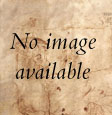Organizing the Written Word: Scripts, Manuscripts and Texts, ed. Marco Mostert (Turnhout, in preparation: USML 30).
The ways in which we ‘access’ written information can be quite different from the ways in which late antique or early medieval literates searched their manuscripts for the information they needed. At some stage in the development of western literacy, the need for quickly accessing written information must have led to the invention and propagation of the consultation aids we now take for granted. Current wisdom has it, that the development of ‘consultation literacy’ was accelerated in the twelfth and thirteenth centuries. Yet we also know of intellectuals in the early Middle Ages whose attitude towards the written word was not all that different from ours. Complex texts were composed and searched long before the twelfth and thirteenth centuries. What are the differences and similarities between early and late medieval ways of finding written information? How and when was the manuscript page adapted to facilitate the retrieval of textual evidence? How and when did the organization of written texts change? How and when did auxiliary texts become current as aids for consulting the main text? How and when did catalogues and inventories develop? In short: how and when did consultation literacy as we now know it develop? These are the general questions addressed in the contributions to this volume.
The table of contents will be added upon publication.


